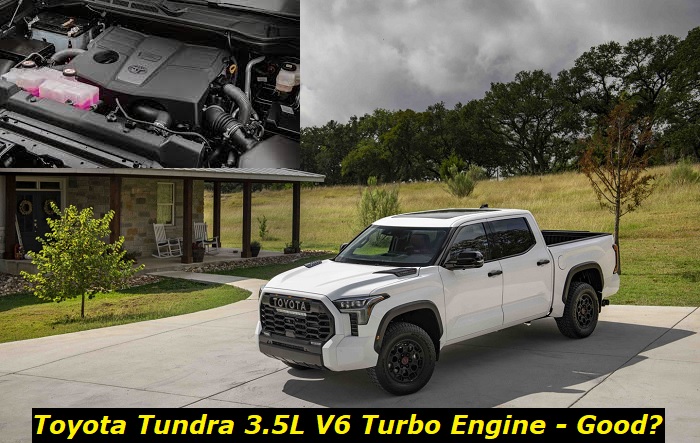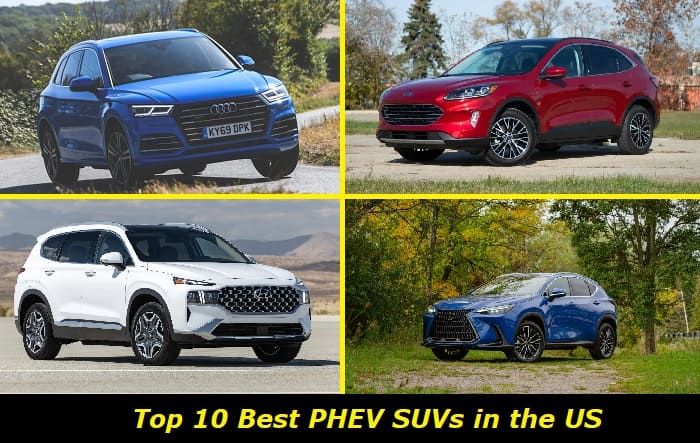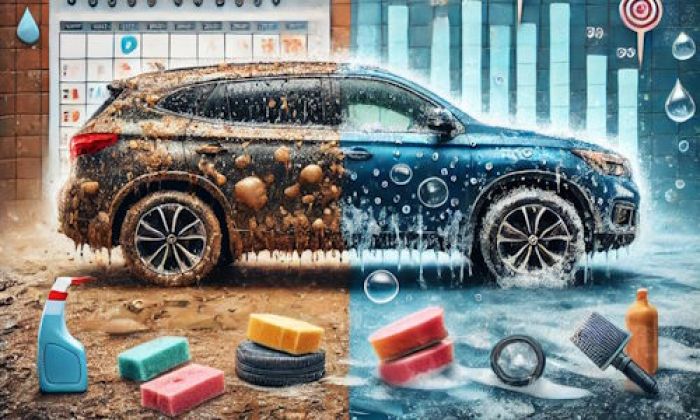The Tundra is one of the popular truck models in the US. For many years, it was consistently selling more than 100,000 vehicles a year in America and this only changed in 2021 when the company sold just a little more than 80,000 cars a year, But the new Tundra seems to be really appealing to American buyers so we expect it will get back its popularity and will sell even better than earlier.
Today, we'll tell you about the 3.5L V35A-FTS turbocharged V6 engine that powers the new Toyota Tundra. We'll cover everything we know about the non-hybrid engine in this vehicle. Also, we'll see what kinds of problems you may encounter if you have a truck powered by this engine. You should read the article before making any decisions about this truck.

Key features and my opinion about the engine
- Production years:2017-now
- Average lifespan of V35A-FTS:190,000-220,000 miles
- Fuel supply type:combined injection D4-ST (direct + port)
- Power range:350-420 hp
- Fuel efficiency:average
- Engine block material:aluminum
- Engine reliability score:medium
- The most common problems:oil consumption, VVTi problems, chain stretching.
What should you know about the Tundra base engine?
So, this is the full-size truck that is made to compete with the legendary Ford F-150. Although a large number of Americans still prefer Ford, we understand those who buy the Toyota. It looks wonderful, it's really cool inside, it has a single V6 engine and also another hybrid powerplant, it has a really reliable transmission which is good for the truck.
Of course, Toyota is a little less practical than Ford and some other competitors on the market. But it's the Toyota that is going to live longer and require much less maintenance than you may expect from the F-150 or any other truck of this size. It's an almost perfect vehicle from the technical point of view and we'll struggle to find some common issues to include in our list.
Here's what you should know about the 3.5L V6 V35A-FTS non-hybrid engine in the Tundra:
- the engine belongs to the Dynamic Force family and is pretty reliable, it has no doubtful technologies that can fail soon after you buy it;
- the 3.5L V6 engine is twin-turbo, it's codenamed V35A-FTS, the engine is pretty fresh and has already got a lot of positive feedback and reviews;
- the same engine has also been used in the Sequoia, Land Cruiser, and also in the Lexus LS and LX;
- the hybrid powertrain in the Toyota Tundra uses completely the same engine mated with the electric motor;
- the engine is paired with the 10-speed automatic transmission - ECTi Direct Shift - engineered and manufactured by Aisin company;
- the engine offers 389 horsepower and 479 lb-ft of torque - not a huge amount of power but enough for the truck;
- the truck can go about 18 MPG in the city and 24 MPG on highways, in real life the consumption will be a little worse than that.
Now you know everything about the heart of the new Toyota Tundra. The engine is not bad at all and it can power the truck in any situation without a power deficit. The torque is great and available right away at the low RPM level. It means the torque will allow you to tow about 8,300 pounds. Worse than the F-150 but still not bad at all.
Also, the engine is pretty smooth and silent. When it works, you don't feel any vibrations or too much sound from under the hood. But when you press the gas pedal deep, you feel the roar of the mighty turbocharged V6. Reviewers claim that the vehicle can go from 0 to 60 mph in just 5.7 seconds. This is too fast for a truck, we would say.
Please note: the engine has 3,444 cc of displacement that's why in some sources it's claimed to be the 3.4L V6.
How many miles will the 3.5L V6 Turbo engine live in the Tundra?
It's always hard to predict the longevity of the engine that is used in a truck. The problem is that many owners will use the truck for work and will load this vehicle heavily. Of course, if you all the time tow something heavy with your Tundra, the engine will die much faster than you may think. But if you use it as a daily driver and just sometimes tow your boat there and then, the engine will live for ages.
In our opinion, the 3.5L V6 Turbo in your Toyota Tundra is good to go about 250,000 miles if maintained well and used as an average vehicle. It's a wonderful result because it's hard to find a new engine that would live more than 150K miles. But this one will obviously be able to surpass this milestone.
We don't see any weak links in the system. The transmission will also be OK if the oil and filter are changed regularly. The turbocharger may need some repair from time to time but it's not that complicated and the repair is not going to cost you a fortune. Also, other engine systems are more or less good to last over 200K miles.
All you need to do is to provide your vehicle with proper maintenance. But we'll get back to it later in our article.
What are the common problems with the Tundra V6 engine?
So, the 3.5L V6 Turbo engine in your Tundra makes a great first impression. And you may be ready to pay your money for the vehicle right now after reading so many good words about it. Let's give our readers some things to consider before they happily pay money for the new Tundra.
Here are some of the common problems with this engine:
1. Sporadic turbocharger issues
We believe there is a problem with the settings of the twin-turbo system. It needs more attention from Toyota engineers because the turbocharger may fail anywhere between 50 and 100 thousand miles. This is too soon for the reliable Toyota engine, so we believe there is a problem with the Westgate or something else.
Replacing or repairing the turbocharger is not that hard or expensive but you will have to leave your truck for some time in the dealership and will also have to pay for labor which is pretty expensive in Toyota dealerships. So, this is the first problem we wanted to tell you about.
2. Availability of new OEM parts
Tundras are still not the most popular trucks and these 3.5L V6 Turbo engines are not the most popular powerplants in the US. That's why your truck may spend a week or two in the dealership even if the problem is not that bad. The reason is that delivering parts will take some time because there is basically nothing for this vehicle in the dealership.
The availability of parts is one of the reasons why so many people choose Ford models. And we don't see any chances for Toyota to improve something in this sphere because loading dealerships with parts will obviously cost them billions.
3. Gas mileage when you press the pedal
Toyota claims that the 3.5L Turbo V35A-FTS engine can easily go 18 MPG in the city. But we couldn't find a real owner of the Tundra equipped with this engine who would agree with this statement. When you want to drive more or less actively, you will have to press that gas pedal hard due to the size and weight of the vehicle. This will lead to higher fuel consumption.
When you tow or haul something, the fuel economy becomes impossible to look at. The best solution is to not look at the dash because you may be frustrated with what you see there. Unfortunately, there is nothing you can do about that. Just try to adapt your driving style to spend less money on fuel.
What should you do to keep this engine running longer?
We could come up with several things you should regularly do to avoid premature death of the 3.5L V6 engine in your Toyota Tundra. This is not that easy because American drivers got used to the fact that big-displacement engines are very reliable and need minimal maintenance. But things have changed, so modern engines are pretty tender.
Here's what you should do:
- regular maintenance with oil and filters change is your religion in this vehicle;
- pay attention to the condition of the turbochargers in this vehicle;
- don't forget to immediately address any leaks you locate in your truck;
- avoid using aftermarket parts and fluids - OEM Toyota things are your choice;
- don't ignore check-engine lights and other error messages on your dash.
Overall, the new Tundra is a very reliable and almost problem-free vehicle that can drive up to 250,000 miles with no major issues. This is a rare claim among modern trucks and cars, so we can clearly recommend this vehicle.
But still, you should remember that this is a modern high-tech vehicle that needs your attention to work properly and not fail.
About the authors
The CarAraC research team is composed of seasoned auto mechanics and automotive industry professionals, including individuals with advanced degrees and certifications in their field. Our team members boast prestigious credentials, reflecting their extensive knowledge and skills. These qualifications include: IMI: Institute of the Motor Industry, ASE-Certified Master Automobile Technicians; Coventry University, Graduate of MA in Automotive Journalism; Politecnico di Torino, Italy, MS Automotive Engineering; Ss. Cyril and Methodius University in Skopje, Mechanical University in Skopje; TOC Automotive College; DHA Suffa University, Department of Mechanical Engineering






Add comment